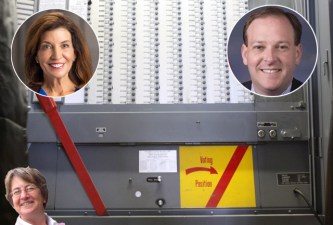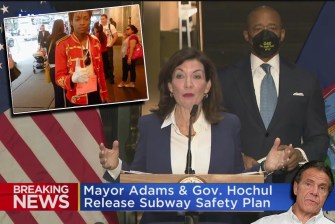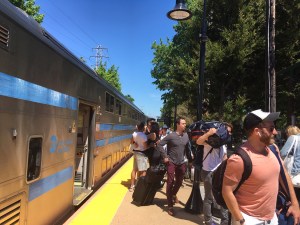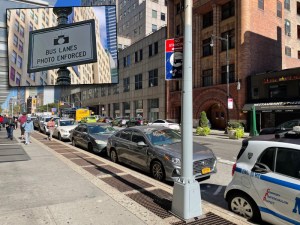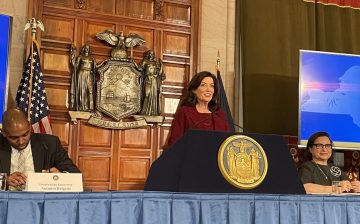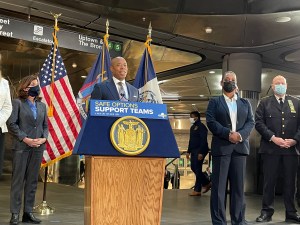ANALYSIS: Subway Riders Backed Hochul By Widest Margins; Now Governor Better Deliver
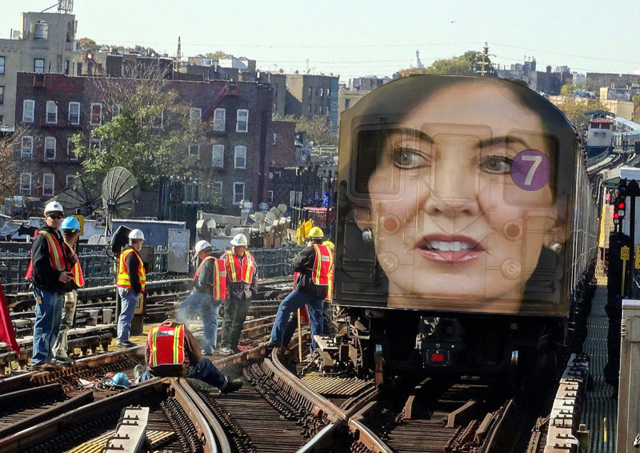
They had her back, so now she better have theirs.
New Yorkers who actually ride the subway supported Gov. Hochul by a wider margin than her overall 69.5 to 30.3 city victory over Republican Lee Zeldin in the Nov. 8 election.
For example:
- Hochul defeated Zeldin in every single election district containing the 25 busiest stations in the system by a collective margin of 81 percent to 19 percent.
- The incumbent also soundly beat the insurgent challenger in election districts where subway ridership is recovering best from the pandemic, winning 41 of those 46 districts, by a collective margin of 75 percent to 25 percent.
Here’s a map:

The numbers aren’t really a surprise — many of the system’s busiest stations are in Manhattan or in other heavily Democratic areas. And stations with a high rate of return from the pandemic tend to be in areas with a high number of essential workers, who also disproportionately back Democrats.
But the Streetsblog analysis shows that Zeldin’s message that the subway is badly run or a cesspool of crime is not a campaign theme that resonated with the people who actually use the subway.
“People who take the subway far outnumber those who hate the subway, at least within the boroughs that depend on it,” said Danny Pearlstein of Riders Alliance. “The anti-urban sentiment driving much of Zeldin’s popularity was largely confined to people who themselves live outside the city or at its edges.”
More important, the wide margin of victory should embolden Hochul and the Democratic caucus in the state legislature to double-down on transit funding and help the MTA avoid falling off its well-documented fiscal cliff, advocates said.

“MTA riders recently demonstrated their political importance through the ballot box by re-electing Gov. Hochul [and] given the political and economic importance the MTA, the governor needs to invest in mass transit and provide the MTA the billions it needs in new dedicated revenues to save it from the fiscal cliff,” said Rachael Fauss of Reinvent Albany, which reported last week that the MTA “has no future without billions in new, recurring, state dedicated funding for operations.”
The MTA declined to discuss the political ramifications of the election, but spokesman John McCarthy said the vote totals show what New Yorkers want.
“As the MTA faces looming multi-billion-dollar deficits, transit users want and deserve representatives in Albany who support fast, reliable, and safe transit,” he said.
Liam Blank of the Tri-State Transportation Campaign agreed that the vote should push the governor and the legislature to use the mandate voters gave them.
“It’s great that core riders are still relying on the subway [because] we definitely need elected officials — now more than ever before — to make tangible improvements to the system so that [more] riders can be lured back,” he said. “Without them, the MTA risks falling into a real death spiral of fare hikes and service cuts, which will further depress ridership and hurt the city and region’s recovery. … The numbers don’t lie. Zeldin’s talking points were largely exaggeration. Clearly the subway isn’t failing New York. It’s still very much the powerhouse of the region’s economy.”

Investing in transit is always good policy, but the Streetsblog analysis shows that it’s good politics, too.
“Pro-transit has always meant good politics in New York City,” said Kate Slevin of Regional Plan Association, but added that the election results should make it easier for politicians to “treat public transit like everything else: garbage pickup, education and other public services that don’t face fiscal cliffs.”
It’s also a basic equity issue in a city where the majority of households do not own a car — and those households tend to be poorer, added Slevin.
“Any dollar you invest in public transit is a vote for a more equitable transportation system,” Slevin said.
Hochul has shown far more interest in investing in the system than her Republican challenger did during the campaign. She has championed a new transit line, The Interborough Express, connecting Brooklyn and Queens, and she has consistently defended congestion pricing, which has strong support among subway users, but not so much from drivers.
“Voters – and transit riders – pay attention to the issues that matter most to them,” said Lisa Daglian, the executive director of the Permanent Citizens Advisory Committee to the MTA. “Gov. Hochul has shown from the beginning that she supports investment in making transit better — subways, buses, Metro-North and the LIRR, through funding and initiatives like the bike/ped/micro-mobility legislation she signed last year. … She has made transit and riders a priority, and we look forward to even more investment and opportunity in her first full term.”
Perhaps above all, the election results simply prove that Zeldin picked the wrong week to stop sniffing the glue of anti-transit rhetoric.
“Lee Zeldin was not speaking about the New York experience that so many of us have every day,” said Daglian. “He was out of touch with the majority of subway riders. The subway – and buses, LIRR and Metro-North— are the best way to get around and the most environmentally sound and affordable. Millions of us can’t be wrong every day.”
